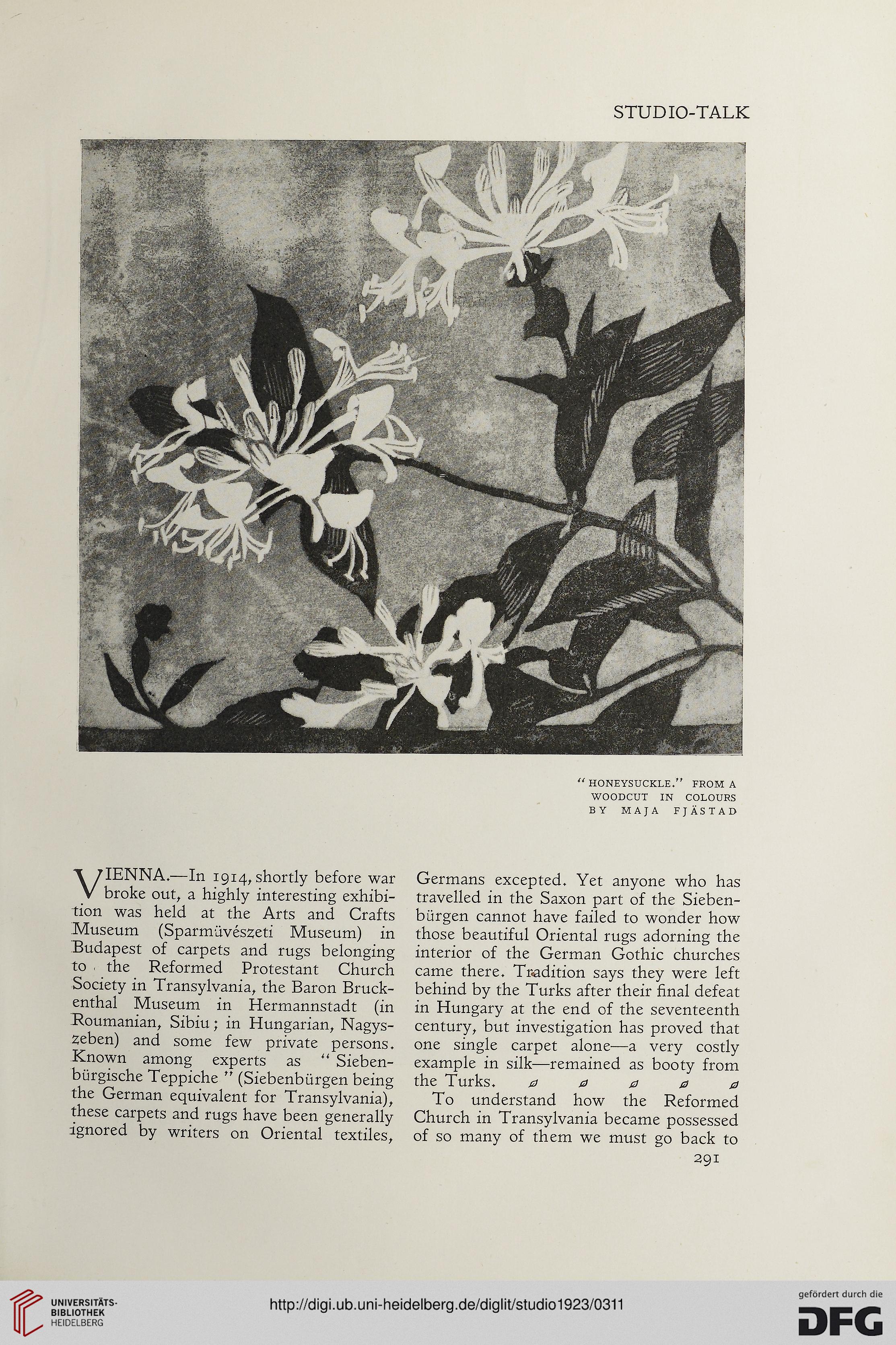STUDIO-TALK
“ HONEYSUCKLE.” FROM A
WOODCUT IN COLOURS
BY MAJA FJASTAD
VIENNA.—In 1914, shortly before war
broke out, a highly interesting exhibi-
tion was held at the Arts and Crafts
Museum (Sparmuveszeti Museum) in
Budapest of carpets and rugs belonging
to the Reformed Protestant Church
Society in Transylvania, the Baron Bruck-
enthal Museum in Hermannstadt (in
Roumanian, Sibiu; in Hungarian, Nagys-
Zeben) and some few private persons.
Known among experts as u Sieben-
biirgische Teppiche ” (Siebenbiirgen being
the German equivalent for Transylvania),
these carpets and rugs have been generally
ignored by writers on Oriental textiles,
Germans excepted. Yet anyone who has
travelled in the Saxon part of the Sieben-
biirgen cannot have failed to wonder how
those beautiful Oriental rugs adorning the
interior of the German Gothic churches
came there. Tradition says they were left
behind by the Turks after their final defeat
in Hungary at the end of the seventeenth
century, but investigation has proved that
one single carpet alone—a very costly
example in silk—remained as booty from
the Turks. 00000
To understand how the Reformed
Church in Transylvania became possessed
of so many of them we must go back to
291
“ HONEYSUCKLE.” FROM A
WOODCUT IN COLOURS
BY MAJA FJASTAD
VIENNA.—In 1914, shortly before war
broke out, a highly interesting exhibi-
tion was held at the Arts and Crafts
Museum (Sparmuveszeti Museum) in
Budapest of carpets and rugs belonging
to the Reformed Protestant Church
Society in Transylvania, the Baron Bruck-
enthal Museum in Hermannstadt (in
Roumanian, Sibiu; in Hungarian, Nagys-
Zeben) and some few private persons.
Known among experts as u Sieben-
biirgische Teppiche ” (Siebenbiirgen being
the German equivalent for Transylvania),
these carpets and rugs have been generally
ignored by writers on Oriental textiles,
Germans excepted. Yet anyone who has
travelled in the Saxon part of the Sieben-
biirgen cannot have failed to wonder how
those beautiful Oriental rugs adorning the
interior of the German Gothic churches
came there. Tradition says they were left
behind by the Turks after their final defeat
in Hungary at the end of the seventeenth
century, but investigation has proved that
one single carpet alone—a very costly
example in silk—remained as booty from
the Turks. 00000
To understand how the Reformed
Church in Transylvania became possessed
of so many of them we must go back to
291




